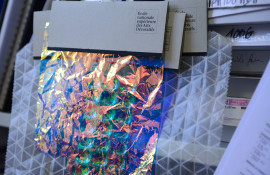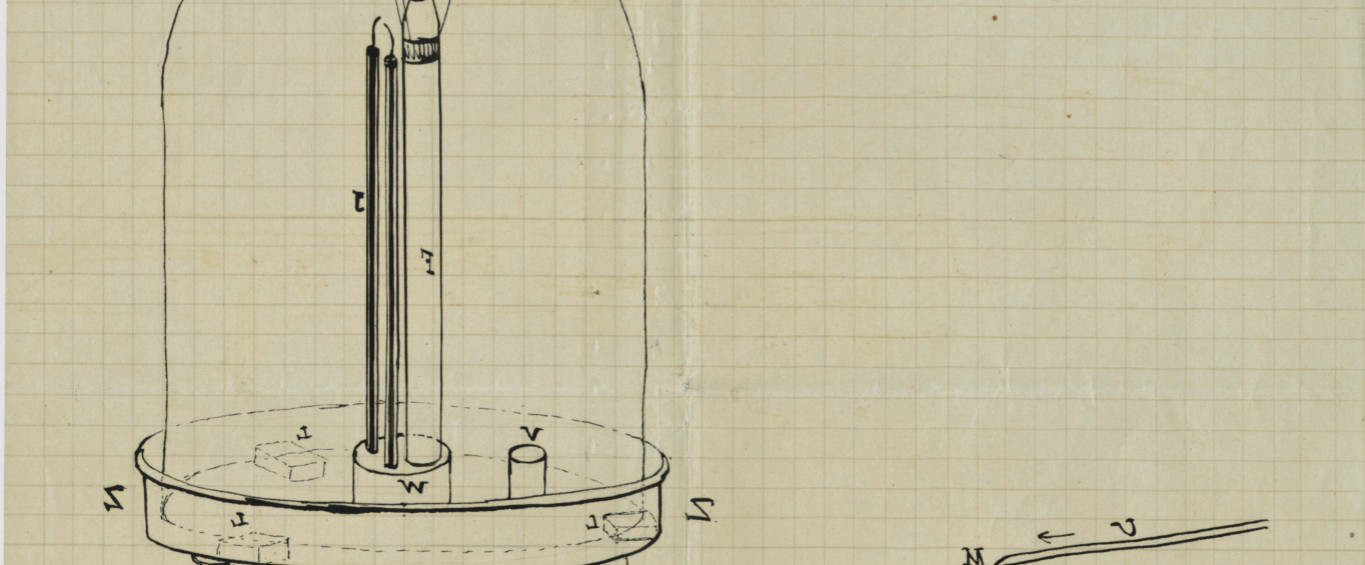
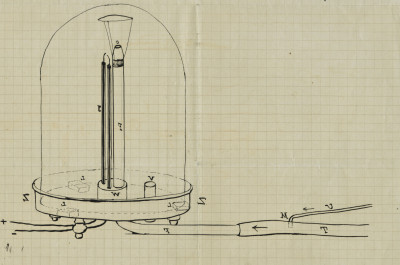
Chimie ParisTech and PSL-Explore celebrate Friedel
Charles Friedel (1832-1899) was a prominent French chemist and mineralogist, and was notably the founder of the Institut de chimie de Paris. He is best known for having set out, together with James Mason Crafts (1839-1917), the procedure for synthesizing benzene – a procedure which is now known as the Friedel-Crafts reaction.
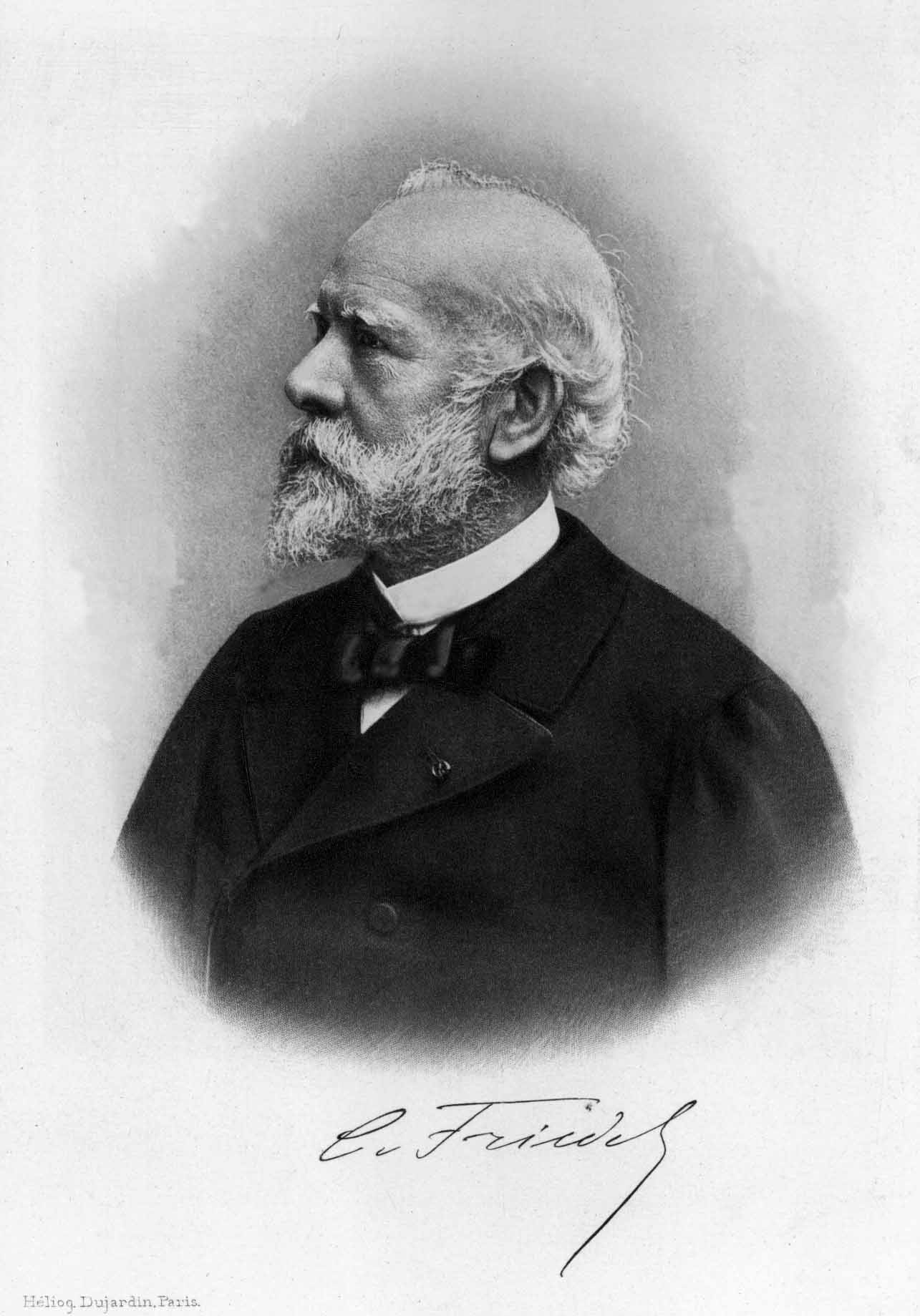
WHO WAS CHARLES FRIEDEL?
Youth and Education
Charles Friedel was born on 12th March 1832 in Strasbourg to a bourgeois family for whom science was already of great importance: his maternal grandfather, Georges Duvernois, was a renowned professor at the Muséum d’histoire naturelle; his father, though a banker by profession, was fascinated in the spirit of the age by the latest advances in science.
Charles Friedel was born on 12th March 1832 in Strasbourg to a bourgeois family for whom science was already of great importance: his maternal grandfather, Georges Duvernois, was a renowned professor at the Muséum d’histoire naturelle; his father, though a banker by profession, was fascinated in the spirit of the age by the latest advances in science.
Friedel’s Career: Between Chemistry and Mineralogy
Friedel was admitted to the Faculté des sciences at the University of Strasbourg, where he took classes in both chemistry and mineralogy. After a year off spent working for his father, he decided to return to his studies, moving to Paris to live with his grandfather who occupied Buffon’s former apartment at the Muséum d’histoire naturelle.
[ right: Charles Friedel – Heliograph by Paul Rodolphe Joseph Dujardin (1843-1913)]

In 1854, he was awarded a bachelor’s degree in mathematics from the Sorbonne and joined a chemistry laboratory at the École de médecine. The head of the laboratory, Adolphe Wurtz, was a fellow Strasbourgeois, and he and Friedel quickly became friends. At the same time, Friedel was offered a job as a technician by Dufrenoy, professor of mineralogy, director of the École des mines; the following year, Dufrenoy made Friedel the curator of his the Musée de mineralogie, an institution attached to the École des mines. For a many years, he split his time between the disciplines of chemistry and mineralogy, and spearheaded research into ketone bodies, lactic acids, the organic structure of silicon (together with James Mason Craft), zircon crystals, and the pyroelectricity of minerals. In 1871, he was able to synthesize glycerine from polypropylene.
Two years earlier, in 1869, he had defended two doctoral theses: the first, in chermistry, was entitled ‘Research on acetones and aldehydes’ while the second, in mineralogy, dealt with ‘Pyroelectricity in electricity conducting crystals’. At this stage in his career, he had published some fifty or so articles. In 1871, he was named professor in mineralogy at the École normale supérieure, where he replaced Alfred Des Cloizeaux. In 1876, he was awarded the chair in mineralogy department at the Sorbonne. He maintained and developed the university’s impressive mineral collections, and discovered a number of new varieties including one, ZnS, that he would name ‘wurtzite’ in homage to his mentor.
[ left: Pseudocubic melanophlogite, DOC reference. FRIED/10-E. Find it in our online collections.]
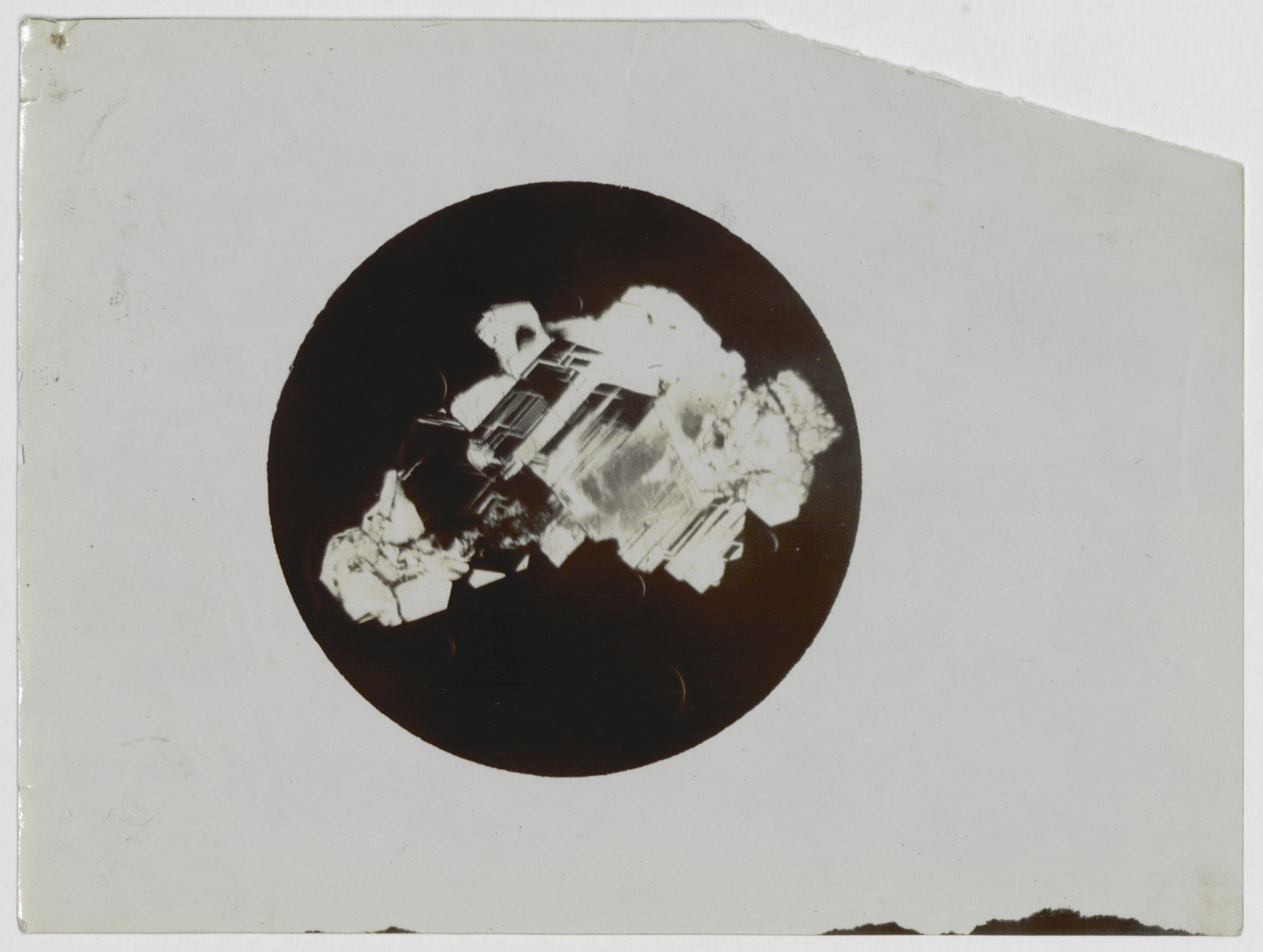 The Friedel-Crafts reaction
The Friedel-Crafts reaction
The collaboration between Friedel and Crafts was made possible by the frequent visits paid by the latter to Paris between 1874 and 1891. After studying the chemistry of silicon, they discovered – this time by chance – the catalytic effect of aluminium chloride. They next turned their attention to the coupling of benzenic nuclei with organic radicals. The result was formulated as C6H6 + R—Cl ------ C6H5R + HCl.
It was in 1877 that the pair officially published the method for synthesizing benzene which would earn them their renown. This reaction, known in chemistry as the Friedel-Crafts reaction, is an integral one for organic chemistry. The reaction is used to synthesize dyes and active substances, but is also important in the refining of oil, where it is used in cracking, the process that breaks down large hydrocarbon molecules into smaller ones. The prestigious Davy medal was awarded to Friedel in 1880 for his work in the field of chemistry.
[ Right: "Photography of a cristal, B’. Sample A’ pressed", refence DOC. FRIED / 10-B. Find it in our online collections.]
Later Work and Research
Friedel’s research enabled him to study a broad range of substances whose molecules contained three atoms of carbon, and to define their isomers. He was thus able to study their principal reactions and set out their rational formulae. Friedel collaborated with Silva to successfully synthesize glycerine, building on early work by Wurtz. Some of Friedel’s most significant discoveries involved the production of combinations of silicon with hydrogen and oxygen. Jean-Baptiste Dumas, who known for his work on vapour densities, had already worked on the chemical similarities between silicon and carbon.
Friedel, collaborating once again with Crafts, developed a rich vein of silicon-based organic chemistry, one with almost infinite possibilities for extension. For example, they showed that silico-chlorofome and silico-oxalic acid differed from chloroform and oxalic acid only in that the former substances contain silicon rather than carbon.
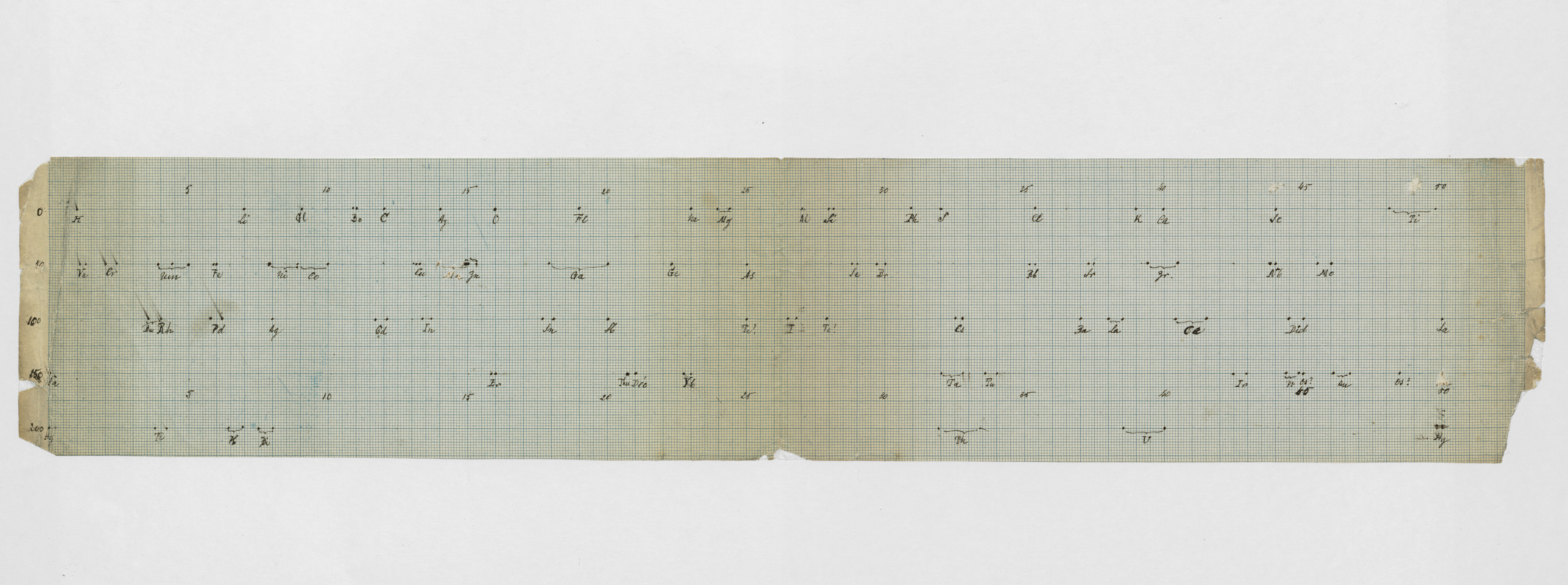
[ above: ‘Attempt at classifying elements’, Charles Friedel, reference LAB.FRIED/14- 37 Find it in our online collections]
In 1884, when Wurtz passed away, Charles Friedel expressed his interest in taking over the organic chemistry chair. Friedel was eventually awarded the chair in December 1884, but only after a series of testy discussions and backroom deals: at the time, organic chemistry was in direct competition with mineral chemistry, with a bitter polemic developing around atomic theory (of which Friedel was a supporter). Friedel took over Wurtz’ laboratory in a provisional space in the École de Médecine; when the laboratory moved the the Sorbonne, Friedel maintained the earlier space to train chemical engineers for work in the industry. This laboratory was first known as the Institut de chimie appliqué before being rename the Institut de chimie de Paris. In 1896, it became the École nationale supérieure de chimie de Paris, and today bares the name Chimie ParisTech. Though he was a dedicated researcher throughout his career, Friedel was also committed to higher education, and was amongst the founders of the École alsacienne de Paris in 1874.
At the time of the school’s foundation, Friedel was working with Emile-Edmond Sarasin on the synthesis of minerals. In 1893, he would attempt – unsuccessfully – to synthesize diamonds.
Friedel died in Montauban in 1899.
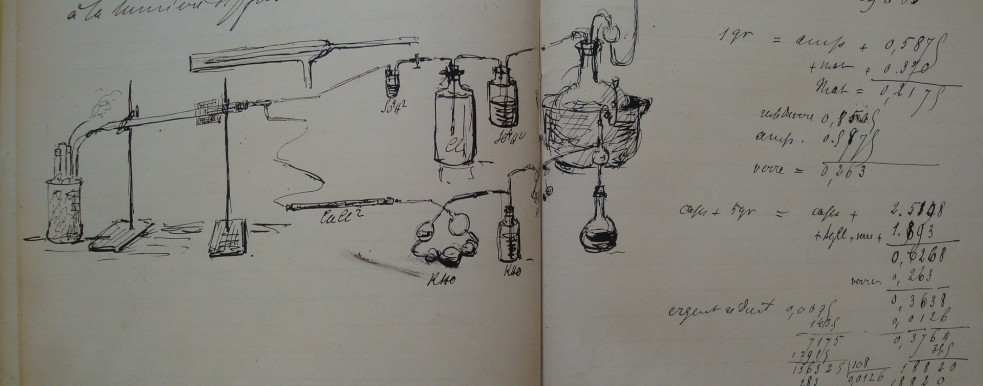
[ above: Laboratory notebook intitled ‘Experiments with chlorine vapour’ (reference LAB.FRIED/8)Find it in our online collections]
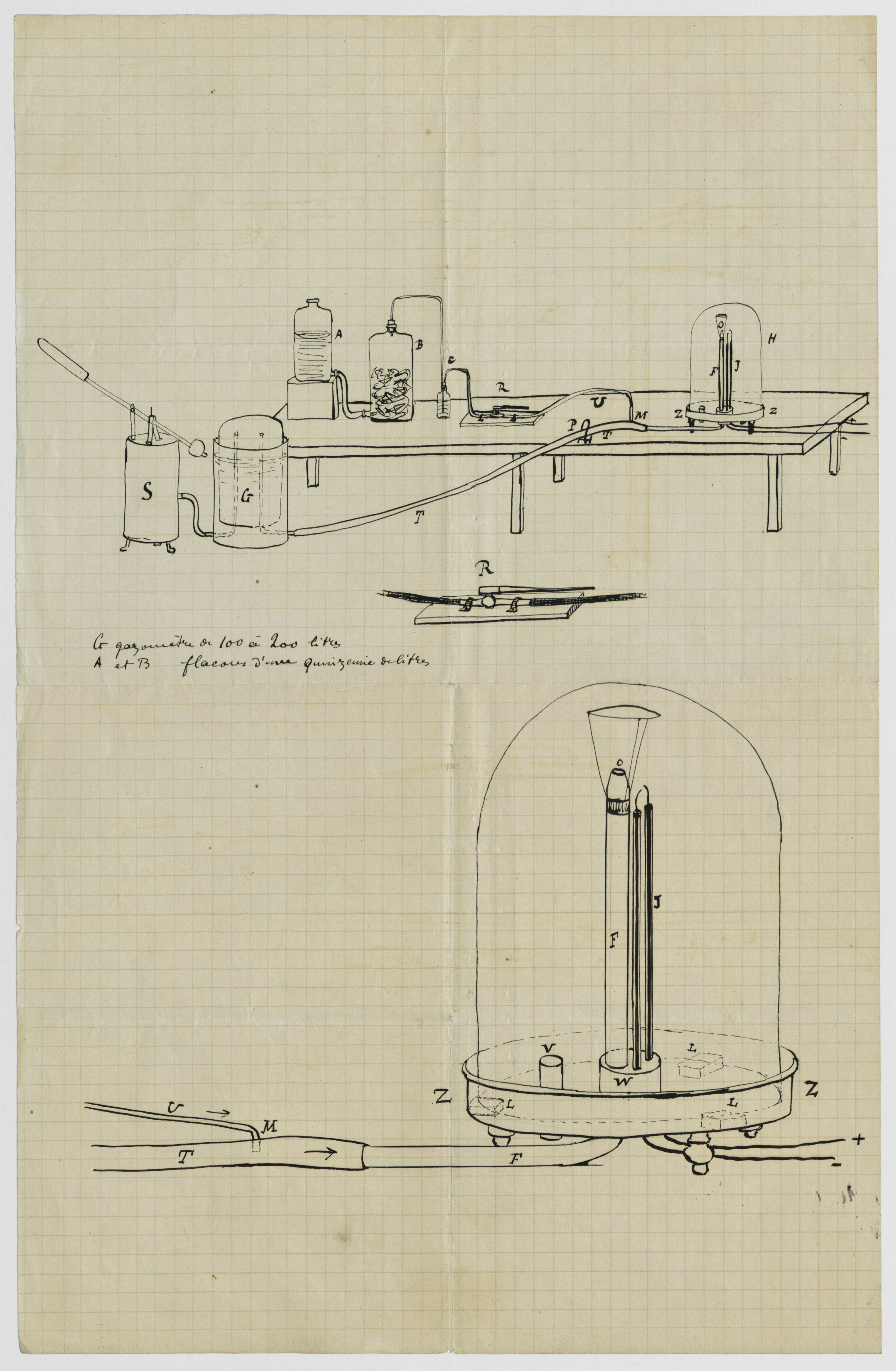 THE COLLECTIONS
THE COLLECTIONS
The archive of Friedel’s notebooks and correspondence is on permanent display in the library of Chimie ParisTech. The display is made of around thirty handwritten documents. A selection of twenty documents have recently been digitized and are now available online on the PSL-Explore portal.
The first part of the archive is made up of fifteen laboratory notebooks, which offer the readers a chance to watch Friedel’s scientific process unfold: he details his experiments, and corrects and refines his ideas. The public can also now discover his description of the effects of methyl chloride, complete with extensive illustrations, as well as transcripts of various experiments and their results, diagrams, equations, and calculations – some of which are rather difficult to decipher!
Numerous documents and loose sheets tucked away inside Friedel’s notebooks complete the corpus: letters, a series of photographs taken with the help of a microscope, an account of the so-called ‘butterfly experiment’ carried out by Montdésir and Schloesing [ right: Butterfly experiment by Montdésir and Schloesing, reference DOC.FRIED/14, available in full here] , as well as drafts of scientific articles and conferences. Several different forms of handwriting can be found in these archives and it is not always possible to attribute them to Friedel with absolute certainty.
Access to the complete collection at the library:
The Friedel archive is open to all PSL students and can be accessed at the library of Chimie ParisTech (Opening hours and access information here).
Though not all documents from the archive are on view, they can be accessed on request. <melinda.toen[a]chimie-paristech.fr>.
Focus by Mélinda Toen (bibliothèque de Chimie ParisTech) and the PSL Ressources et Savoirs team.

